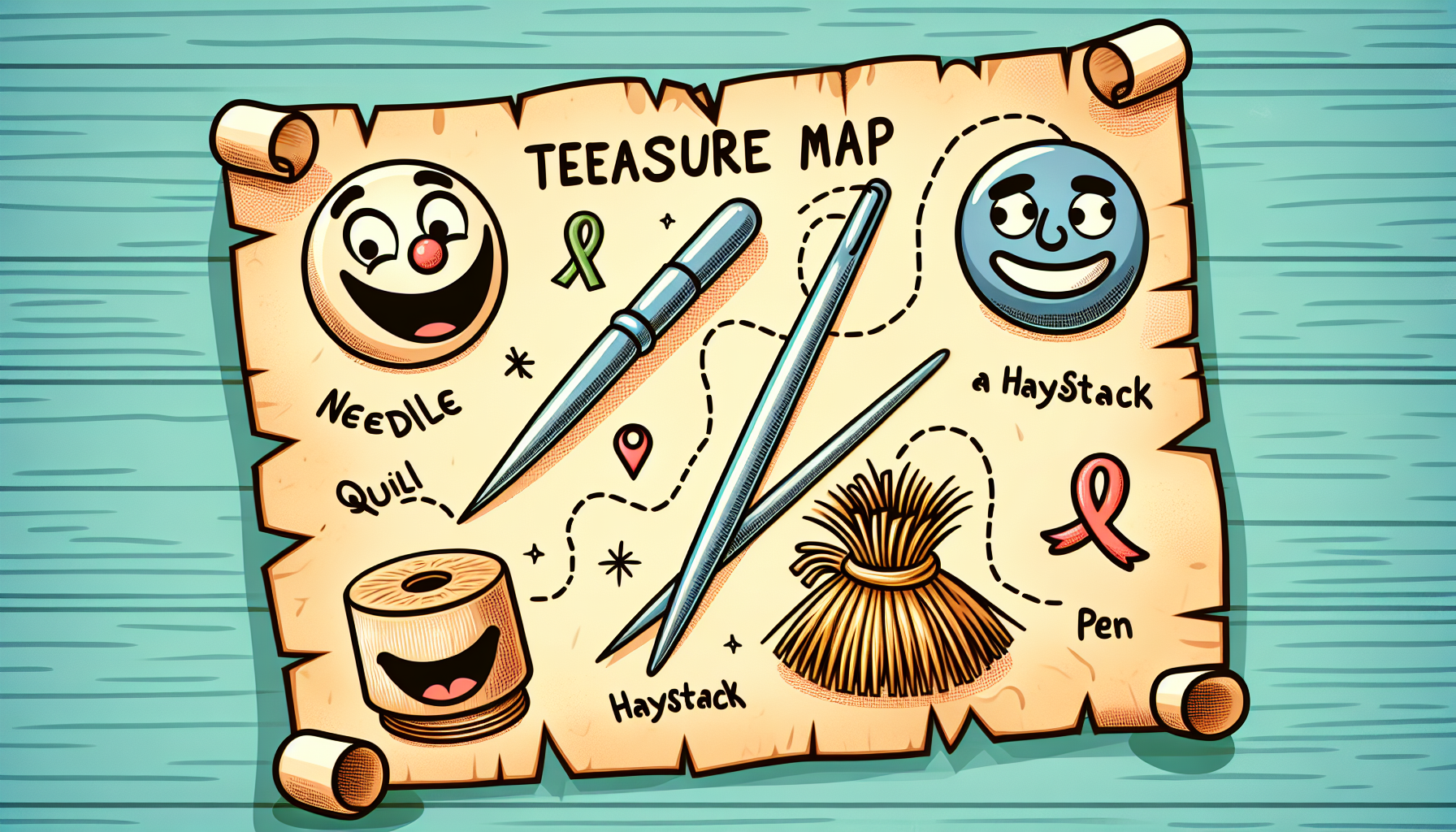Finding the right prompts for satire and humor can feel like searching for a needle in a haystack. You want to spark laughter, but it often feels like the jokes just fall flat. If you’re nodding along, you’re not alone. Crafting comedic content can be tricky, especially when you’re trying to use tools like ChatGPT.
But don’t worry! Stick with me, and I promise you’ll discover a treasure trove of prompts that’ll elevate your humor game. By the end, you’ll feel equipped to unleash some genuinely funny content that captures the essence of satire.
We’ll explore everything from crafting your own hilarious prompts to using current events for a comedic twist. Get ready for some rib-tickling inspiration!
Key Takeaways
- Use creative prompts to generate funny content with ChatGPT, such as satirical news articles or ridiculous character backstories.
- Structure your jokes with a setup, punchline, and tag to enhance humor.
- Incorporate exaggeration and absurdity for comedic effect; relatable scenarios also resonate well.
- Explore everyday situations and current events for material that can be transformed into humor.
- Keep prompts light and playful, encouraging creativity and unexpected twists for maximum laughs.

Best ChatGPT Prompts for Satire and Humor
If you’re diving into the world of satire and humor with ChatGPT, having the right prompts at your fingertips is crucial. Here are some effective prompts you can use to spark comedic brilliance:
- Create a satirical news headline: “Write a satirical news article about a ridiculous trend taking over the internet.”
- Analyze a classic joke: “Explain why the joke ‘Why don’t scientists trust atoms? Because they make up everything!’ is funny.”
- Invent a new character: “Come up with a parody character based on a famous celebrity, complete with a funny backstory.”
- Transform a fairy tale: “Rewrite Little Red Riding Hood as a modern satirical story involving technology and social media.”
Feel free to adjust these to fit your style or the needs of your audience. The key is to push the boundaries of creativity and humor!
How to Write Funny Content Using ChatGPT
Writing funny content using ChatGPT can seem daunting, but with a little practice, you can create comedic gems.
Start by brainstorming ideas that resonate with your target audience’s humor.
Next, use a structured format like setup, punchline, and tag to build your jokes or humorous narratives.
When formulating your prompts, you might say: “Generate a list of five puns related to coffee.” This sets a clear direction for the AI.
Incorporate exaggeration, absurdity, or relatable scenarios into your writing; these are the lifeblood of humor.
Finally, don’t hesitate to review and edit your outputs for the best comedic timing; a funny line can always get funnier with a tweak or two!
Top 10 Examples of Humorous Prompts for ChatGPT
Here are ten humorous prompts that can kickstart your comedic writing:
- “Write a dialogue between a cat and a dog arguing over who is the favorite pet.”
- “Describe a day in the life of a superhero who has the least impressive superpower, like the ability to find lost socks.”
- “Invent a ridiculous commercial for a made-up product that nobody actually needs.”
- “Create a fictional rant from a very disgruntled vegetable being served for dinner.”
- “Write a humorous note from a coffee shop barista to a customer who always orders the longest drink.”
- “Generate a quirky backstory for why the rubber duck is the reigning monarch of bathroom accessories.”
- “Draft a sitcom pitch about five random items living together in a junk drawer.”
- “Imagine a world where socks have feelings – write a sitcom episode about their daily dramas.”
- “Create a comical review of a movie titled ‘Ghosts Can’t Cook.’
- “Write a parody of a popular song, changing the lyrics to be about a mundane task like laundry.”
These prompts encourage outlandish creativity, perfect for landing laughs!
Tips for Crafting Your Own Satirical Prompts
Crafting your own satirical prompts can elevate your humor writing to new heights.
Start by identifying current events or societal trends that lend themselves to comedy.
Structure your prompts around a clear scenario or character that embodies the satire you want to convey.
For example, a prompt could be: “Create a satirical interview with a fictional politician whose main policy is to replace all public transport with pogo sticks.”
Utilize irony and exaggeration to highlight the absurdities of real-life situations.
Also, reading or watching established satire – like “Saturday Night Live” sketches or “The Onion” articles – can provide excellent inspiration for your prompts.
Finally, remember to keep the tone light and playful; satire should make people think and laugh without crossing the line into negativity.
If you’re looking for more creative inspiration, check out these creative writing prompts to spark your imagination!

Using ChatGPT for Comedic Skits and Dialogues
Writing comedic skits and dialogues with ChatGPT can bring your ideas to life in hilarious ways.
Start by setting the scene: “Create a one-act skit set in a futuristic coffee shop where robots serve customers but can’t understand their orders.”
Use strong, quirky character traits to guide the interactions, like a snarky barista robot with a bad sense of humor.
Another prompt could be: “Write a funny dialogue between two friends discussing their ridiculous new year’s resolutions.”
Comedy thrives on conflict, so ensure there’s a humorous disagreement, misunderstanding, or exaggerated reaction.
For instance, try: “Draft an argument between a cat and a couch about who gets to dominate the living room.”
Encourage unexpected twists in the dialogue to keep it engaging and witty: “Give the characters a surprise twist where they end up agreeing on an outrageous resolution.”
To make it easy, here are a few copy-paste prompts:
- “Write a comedic skit about a confused alien trying to understand human dating rituals.”
- “Generate a dialogue where one character is trying to sell an invisible pet to a skeptical friend.”
- “Create a humorous exchange between a forgetful wizard and his magical assistant who keeps reminding him about spells.”
How to Incorporate Current Events into Satirical Prompts
Incorporating current events into your satirical prompts adds relevance and immediacy to your humor.
Start by picking a recent event that has wide public attention, like a political debate or major tech launch.
Your prompt might be: “Write a satirical article about how politicians plan to ‘fix’ the issue of potholes with a national pogo stick program.”
Use exaggeration to highlight the absurdity of the actual events: “Create a parody of a celebrity interview about their take on the latest weather patterns as if they are a weather expert.”
Consider the public’s sentiment towards the event; humor can be a way to process frustration or amusement.
For practical application, here are some direct prompts for inspiration:
- “Draft a humorous press release for a fictional company claiming they’re going to solve climate change with ‘magical’ plants.”
- “Write a satire about a new app that promises to measure how much people complain about current events.”
- “Create a comical headline about a celebrity running for office just to get free dinners at state events.”
Transforming Everyday Situations into Humor with ChatGPT
Everyday situations provide a treasure trove of material for humor; the trick is in the transformation.
Start by observing mundane scenarios, like grocery shopping or commuting, and find the quirks within them.
Your prompt could be: “Write a funny story about a person trying to escape an endless loop of grocery store announcements.”
Exaggeration works wonders here; consider how something as simple as waiting in line can be made comedic: “Generate a dialogue between people in line debating the best snack options at the checkout.”
Craft relatable humor by tapping into universal experiences. For instance, try: “Create a comedic monologue where someone reflects on their chaotic morning routine gone wrong.”
Here are some copy-ready prompts to help get your comedic creativity flowing:
- “Generate a humorous guide to surviving a day in the life of a remote worker dodging distractions.”
- “Draft a funny narrative about a person who turns their failed attempt at cooking dinner into a local community event.”
- “Write a comedic take on the woes of trying to assemble furniture without the instructions.”

Testing the Limits of Humor: What Works and What Doesn’t
Understanding what works in humor can help you create more effective content using ChatGPT.
Test your prompts by experimenting with different styles and formats to see which resonates with your audience.
Ask ChatGPT to generate responses to prompts that push the envelope: “Create an incredibly cheesy dad joke about aliens for a stand-up routine.”
Observe audience reactions to find out which jokes land well and which ones don’t.
For testing boundaries, use prompts like:
- “Write a satirical take on why cats secretly run the internet.”
- “Generate a list of the most extreme (but ridiculous) examples of workplace safety regulations.”
- “Create a parody of a fairy tale that involves existential crises among the characters.”
Remember that humor can be subjective; what’s hilarious to one person might fall flat for another.
Make adjustments based on feedback, and continue improving your prompts to suit your desired tone and audience preferences.
Prompt Ideas for Parody and Satirical Writing
Parody and satire thrive on clever ideas that highlight the absurdities of life.
Use humor to hold a mirror to society; start with prompts that mimic popular culture.
Try a simple directive: “Write a parody of a famous movie plot where all the characters must follow ridiculous dietary restrictions.”
Here are some concrete prompt ideas to get you started:
- “Create a funny adaptation of a reality TV show where the contestants compete in bizarre challenges like making sandwiches while blindfolded.”
- “Write a satirical news report on a fictional political debate where candidates argue over the necessity of unicorn crossings.”
- “Imagine a world where everyone speaks in Shakespearean language during a casual coffee shop conversation. Draft that dialogue.”
These prompts encourage creativity while allowing you to explore multiple avenues of parody.
Don’t shy away from exaggeration; it often makes the funniest content.
Creating Satirical Social Media Posts Using ChatGPT
Social media humor demands brevity and punchiness, making it the perfect arena for satire.
Start by observing trending topics; they can spark ideas for humorous commentary.
A simple prompt could be: “Create a satirical tweet about the latest fitness craze that involves doing yoga on roller coasters.”
Think of ways to exaggerate common social media behaviors, like influencers or viral challenges.
Use these prompts for quick wins in social media satire:
- “Draft a humorous Instagram post advertising an imaginary brand of gluten-free air.”
- “Generate a satirical Facebook status update from a pet who is tired of their human’s excessive selfies.”
- “Write a tweet that parodies the overly optimistic quotes often shared on social media.”
Engage your readers by making your satirical posts relatable and relevant to current events.
Play with the tone – a light jab can go a long way in humor that resonates.
FAQs
Some examples include prompts like “Write a conversation between a cat and a dog discussing their human’s quirks” or “Create a parody of a popular movie trailer featuring aliens at a coffee shop.”
To incorporate current events, choose a trending topic and craft a prompt that exaggerates or twists its narrative. For example, parody a political debate or create a humorous take on a viral news story.
Start with relatable topics, use absurdity, and play with word choices. Experiment with puns and surprise twists to keep your audience engaged and entertained. The more unconventional, the better!
To create comedic skits, provide specific character roles and scenarios in your prompt. Include details about the setting and desired tone to guide ChatGPT in generating engaging and humorous dialogues.
